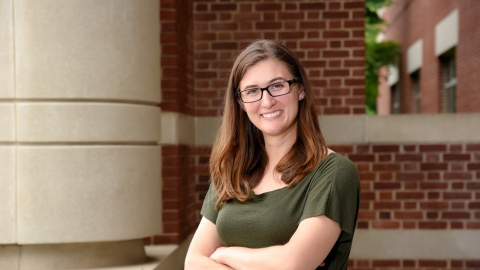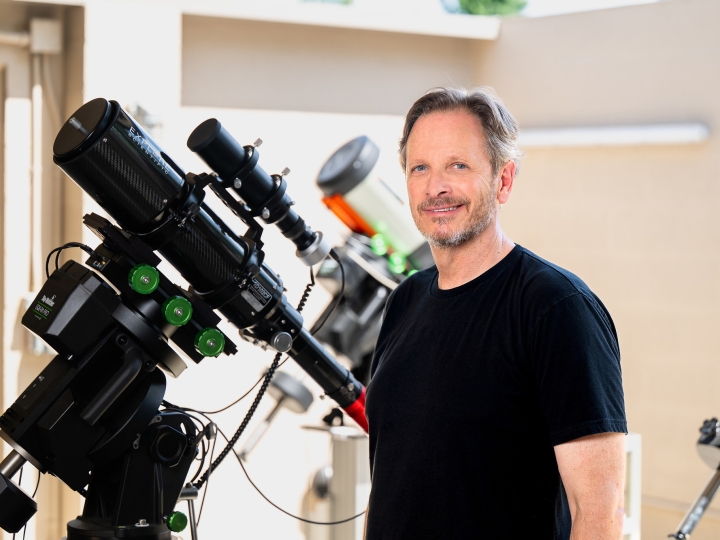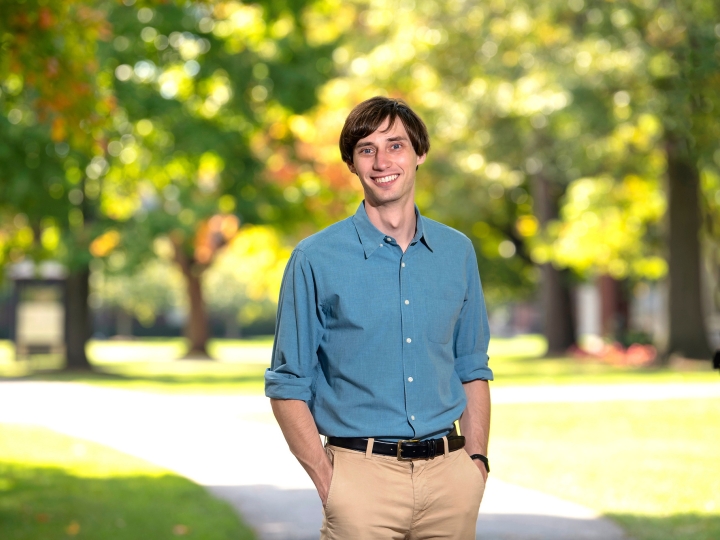
Sarah Lower, Biology
March 1, 2023
I’ve always kept returning to the big unknown. I want to ask questions that nobody knows the answers to and devise ways of figuring them out.
No matter where you're from, you've probably had the childhood experience of catching fireflies in a jar on a warm summer evening. It's one of those wonder-filled moments that reminds us of what we all share as humans, and one that's also the perfect entry point for generating interest in science, says Professor Sarah Lower, biology.
"I really like going out and sharing fireflies as this universal story," says Lower. "It's something you can study in your own backyard, and yet it doesn't take long before you bump up against the boundaries of our knowledge. The unknown is so close, so tantalizingly close."
Lower strives to spread her work beyond the narrow scope of scientific conferences and journals. As a postdoctoral student, she entered a Most Interesting Genome Contest to have a firefly genome sequenced, raised research funds with a Kickstarter-style campaign, and even created Buzzfeed articles, Reddit posts and memes to support her work. Today, as a Bucknell professor, she continues to spark the public's interest at events such as the Pennsylvania Firefly Festival.
In the lab and in the field, Lower studies the connections between the genetics of these captivating critters and the history of their evolution in different environments. While fireflies live almost everywhere, they're not all the same — in fact, there are at least 2,000 species in total and perhaps many more. Most species use their own unique Morse code-like signals to attract mates, while others have lost the ability to flash altogether. There's even a species, dubbed femme fatales, that prey on other fireflies by mimicking their flash patterns, luring them into an ambush.
Lower asks questions such as why the same species of firefly might flash a greenish light in Pennsylvania but one with an orange tint in Texas, and uses sophisticated genetics tools to uncover possible answers buried in their DNA. She even co-led the team that published the highest-resolution firefly genome ever sequenced. Printed in an open-source journal, it's a dataset that will provide insights to researchers for years to come.
Engaging her biology students in this work offers a meaningful way for Lower to teach them essential research skills — such as computation and big-data analysis — that will aid them whether they go on to careers in medicine or other scientific fields. The research experiences she mentors them in also offer transcendent lessons to apply throughout their lives, she says.
"I feel very passionate about research being a life experience — learning that you're not always going to have the right answer," Lower says. "You need to learn to interpret the cues that you get in life, make good decisions and interpret the results to the best of your ability."

